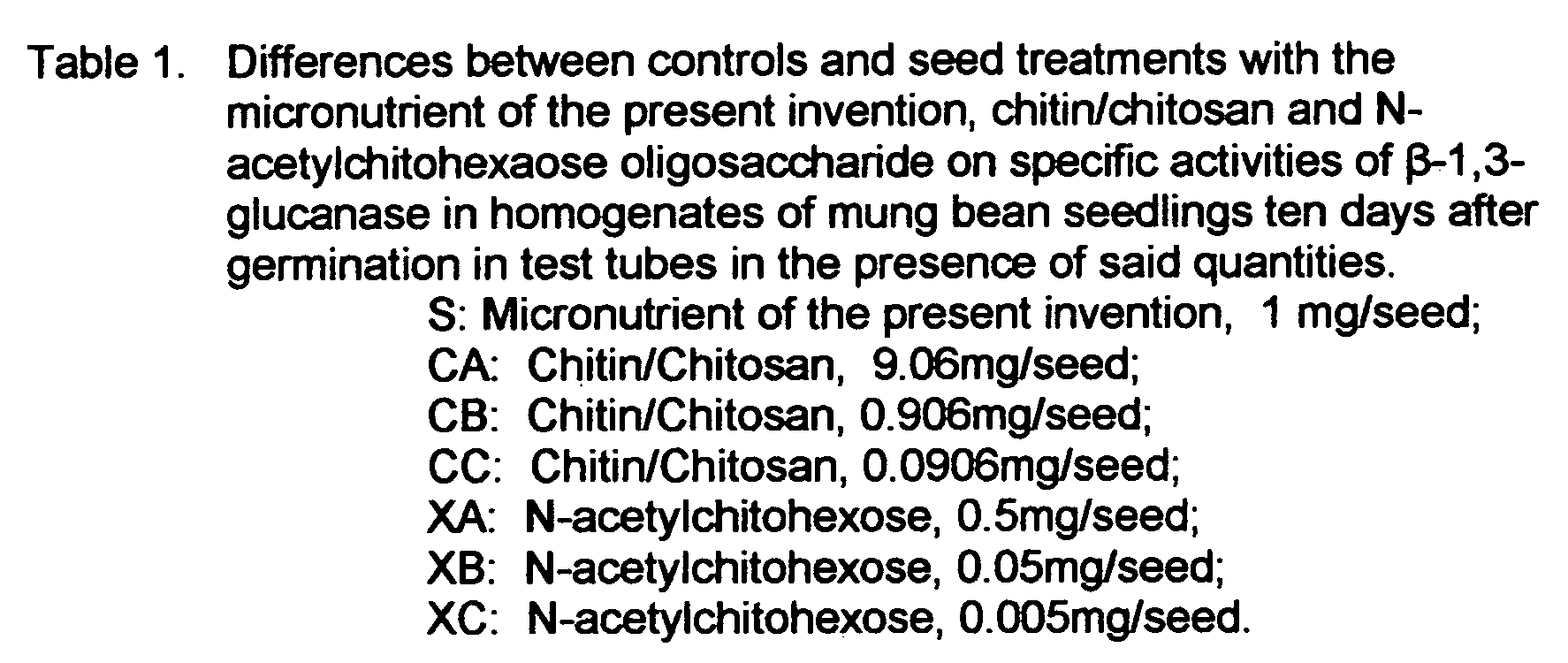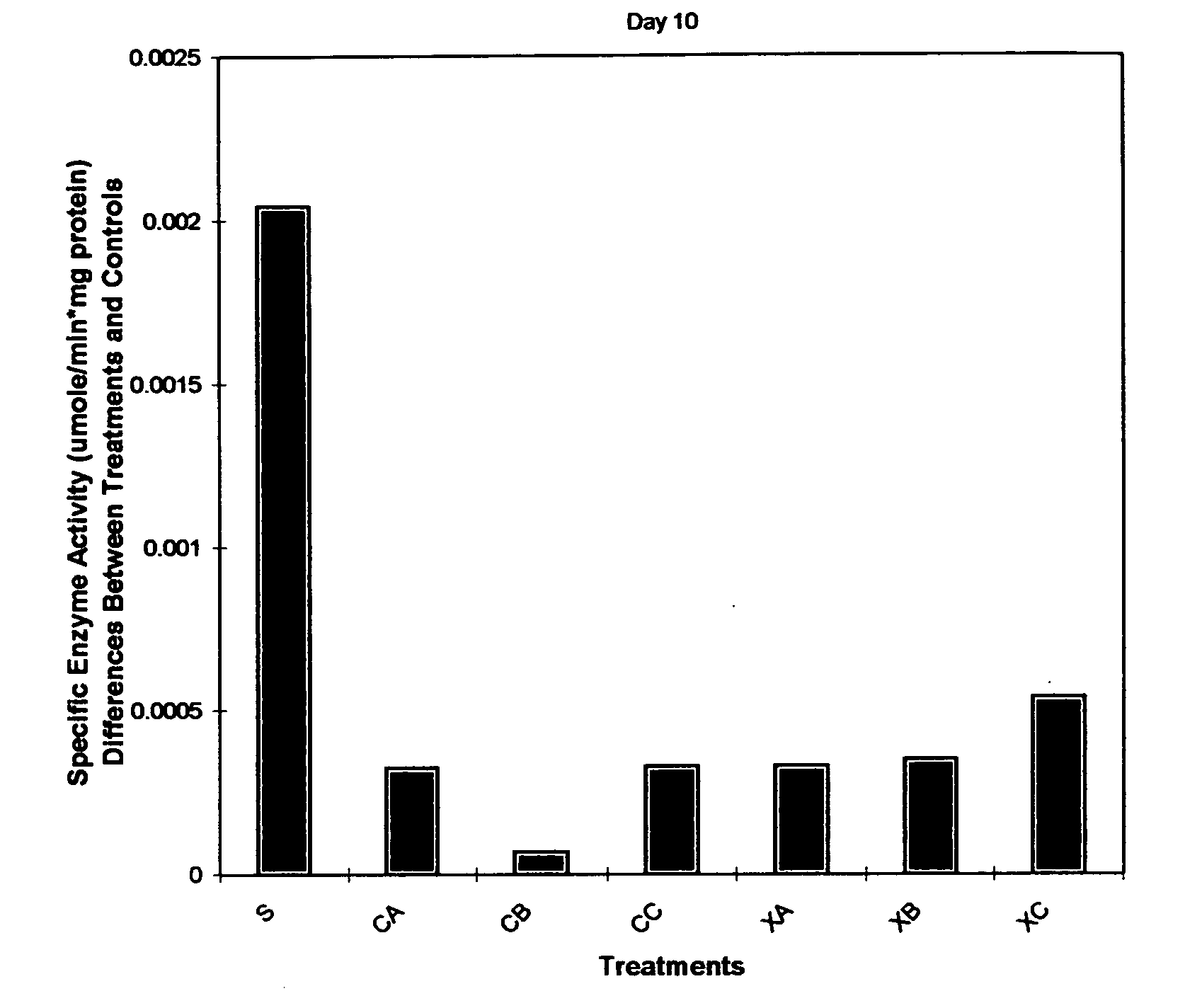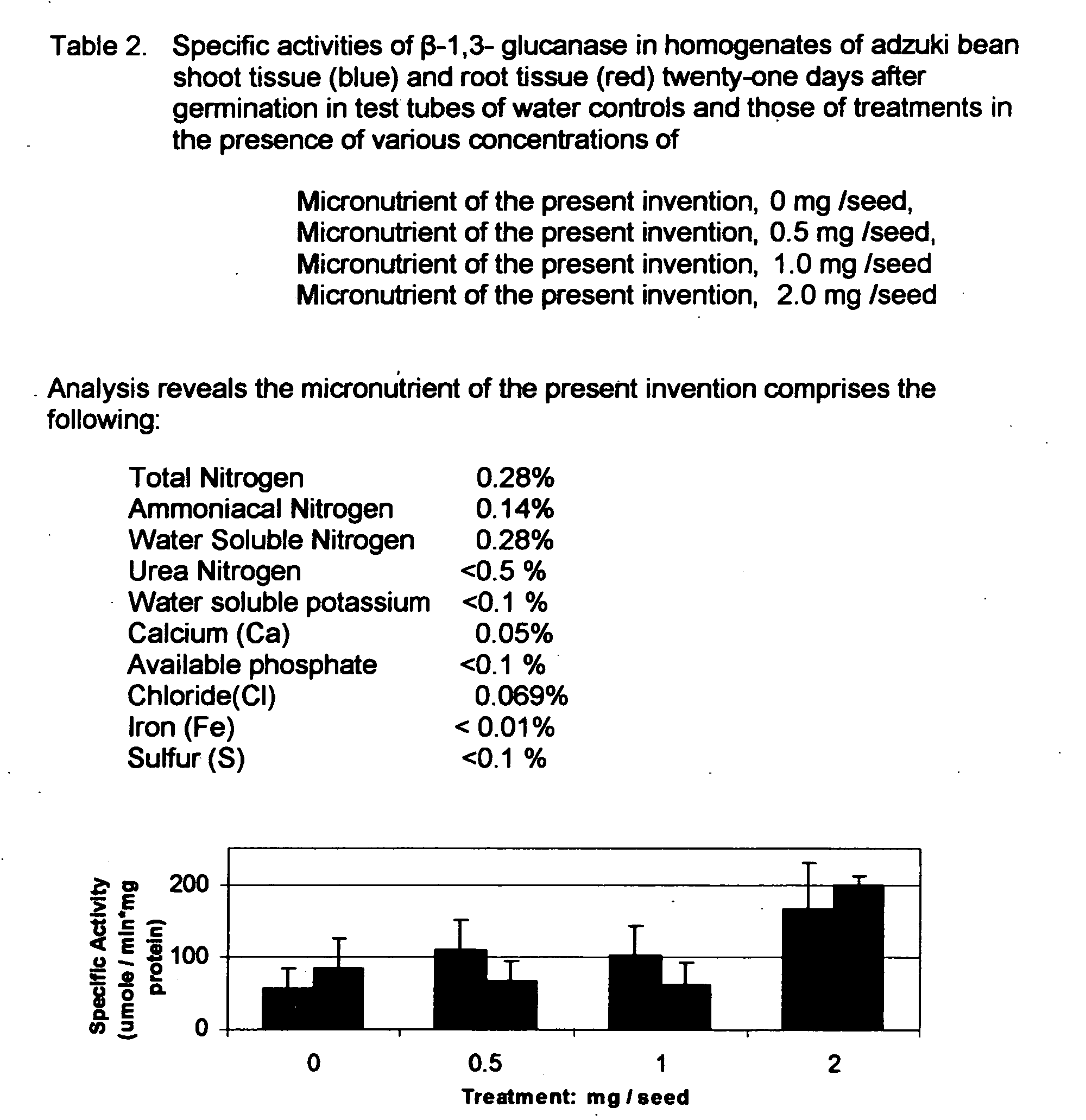Micronutrient elicitor for treating nematodes in field crops
a micronutrient elicitor and nematode technology, applied in the field of micronutrient elicitor for treating nematodes in field crops, can solve the problems of large scale, difficult realization of actual implementation of these desires, and difficulty in achieving or achieving fairly easy or difficult goals
- Summary
- Abstract
- Description
- Claims
- Application Information
AI Technical Summary
Benefits of technology
Problems solved by technology
Method used
Image
Examples
example 1
[0074]Central Illinois Agricultural Research Farms, Inc., 1229 W. Edwards, Springfield, Ill. 62704-1634, 800-497-1525 conducted the following experiment. This experiment was conducted at the Henry White Experimental Farm, Field 4, Soybeans, treated and control, Sep. 1, 2005, Lab. No. 25109 and 25106, composite samples from four replications.
Tissue Test Results and Comments Percent
[0075]
NPKCaMgS4T2.92.24.921.54.25.184C2.99.24.981.42.23.16
PPM
[0076]
BZnMnCuFeAlNa4T443588755175314C4030785718122
[0077]Comments: The most limiting nutrient is Iron (Fe). 8 ratios out of 40 are good. The average deviation is 129 for the treated soybeans and 125 for the control. The deviation is high and indicates that several nutrients are out-of-balance and / or this is a disease scenario. The Becker Nematode Index (BNI) is 83 and 103 respectively. The higher BNI in the control suggests that there are more nematode problems in those strips. Nematode assays were conducted after harvest.
[0078]Oct. 11, 2005
[0079]A...
example 2
[0088]Set forth below is greenhouse data on soybean yields conducted at Colorado State University. This data shows a combination of the micronutrient elicitor of the present invention seed and a foliar treatment had 41% increase in yield. Also the yield seeds weighed more than the control seeds by as much as 49%. Treatment #1 is control. Treatment #2 is untreated seed with two irrigated applications. Treatment #3 is treated seed. Treatment #4 is treated seed with two irrigated applications.
CSU SOYBEAN GREENHOUSE Results2006PercentGrams perGram increasetotalTreatmentIncreaseincreaseseedper seedPercent increasegramsseed10.54056428.6317.0%0.6912480.15068427.9%59.4586plants318.8837.2%0.7493810.20881638.6%69.6993plants420.9641.2%0.8063880.26582449.2%71.7789plants
[0089]Field data results for other crops. note—peanuts had 56% increase in yield).
Seed Treatmentdate: Dec. 7, 2005Soybean% increaseCorn% increaseWheat% increasetreated63.9225.750.4control61.7210.747.9delta2.23.57%157.12%2.55.22%
[...
PUM
 Login to View More
Login to View More Abstract
Description
Claims
Application Information
 Login to View More
Login to View More - R&D
- Intellectual Property
- Life Sciences
- Materials
- Tech Scout
- Unparalleled Data Quality
- Higher Quality Content
- 60% Fewer Hallucinations
Browse by: Latest US Patents, China's latest patents, Technical Efficacy Thesaurus, Application Domain, Technology Topic, Popular Technical Reports.
© 2025 PatSnap. All rights reserved.Legal|Privacy policy|Modern Slavery Act Transparency Statement|Sitemap|About US| Contact US: help@patsnap.com



